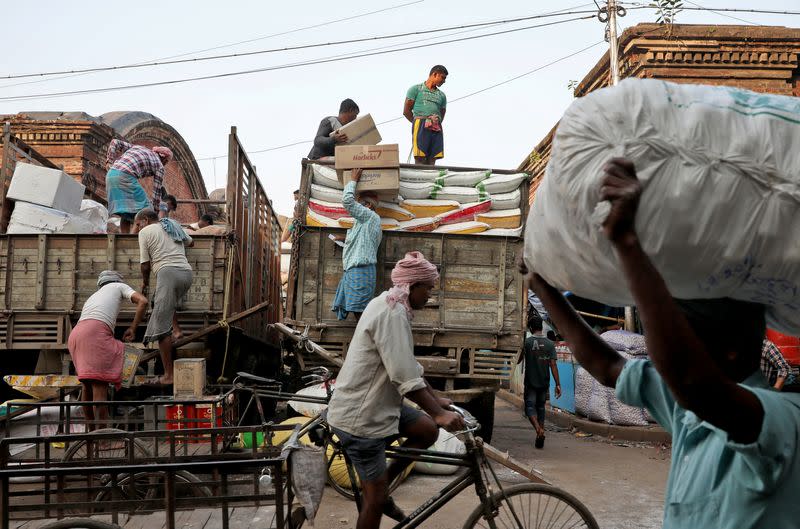Indian wholesale prices fall 3.48% in May

By Shivangi Acharya and Nikunj Ohri
NEW DELHI (Reuters) -India's annual wholesale prices fell for the second consecutive month in May on easing input costs brought about by lower commodity prices, government data showed on Wednesday.
The wholesale price index (WPI) fell 3.48%, compared with a 2.35% fall estimated by economists in a Reuters poll. It fell 0.92% in April.
"The data does not come as a surprise as commodity prices have globally corrected and they have high weightage in WPI," said economist DK Joshi at CRISIL.
The food index fell 1.59% year-on-year against a rise of 0.17% in April, while fuel and power fell 9.17% compared with rise of 0.93% in the previous month.
Manufactured product prices fell 2.97% in May, the data showed.
Inflation pressure in the South Asian country have shown signs of easing in the past few months.
This week, annual retail inflation rate cooled to a more than two-year low of 4.25% in May as cost pressure on food eased, moving closer to the Reserve Bank of India's 4% target.
"WPI will continue to remain negative for next quarter until base effect fades," Joshi said.
Earlier this month, the central bank kept its key lending rate steady for a second consecutive policy meeting, but signalled that monetary conditions will remain tight for some time as it looks to further curb inflationary pressure.
(Reporting by Shivangi Acharya and Nikunj Ohri; Editing by Muralikumar Anantharaman and Christopher Cushing)

 Yahoo Finance
Yahoo Finance 